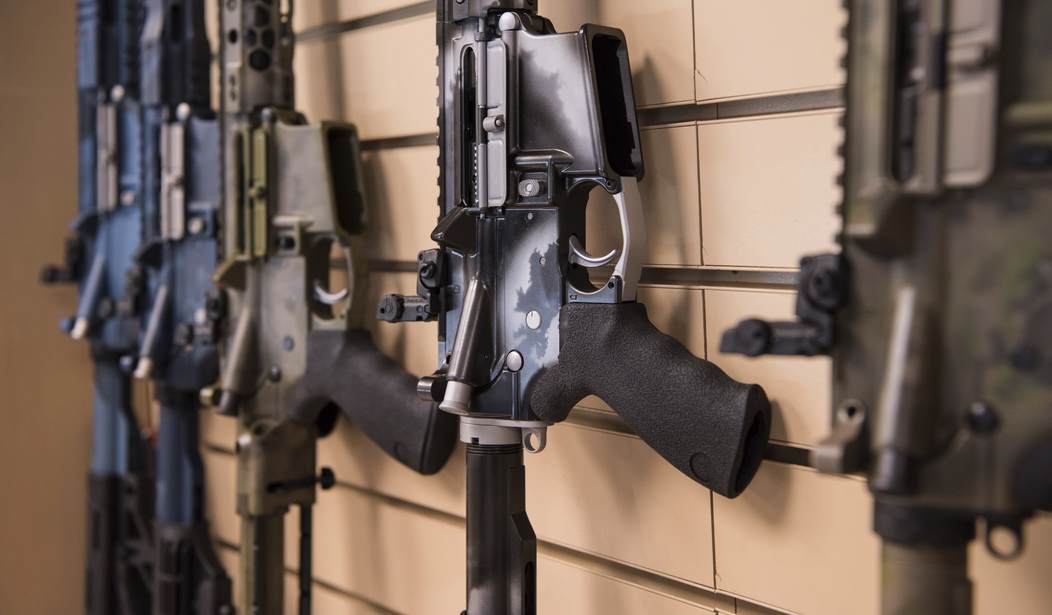We’re still waiting to see what, if anything, the U.S. Supreme Court does with a request to issue an emergency injunction blocking enforcement of the state’s ban on so-called assault weapons and “large capacity” magazines, but on Tuesday the state’s high court heard oral arguments in a separate challenge to the ban that was enacted earlier this year.
The lawsuit heard in the state Supreme Court was filed by a group of gun owners in southern Illinois, and unlike the multiple federal lawsuits that have been brought against the state, this one isn’t based on a deprivation or infringement of our Second Amendment rights. Instead, one of the main thrusts of Caulkins v. Pritzker is that the new law carves out special exemptions for some residents, and in doing so violates the state constitution.
Plaintiffs’ attorney Jerry Stocks argued that because the law allows some people to continue owning the banned weapons — law enforcement officers, certain security guards, active-duty military personnel, and people who already owned those weapons before the law took effect, among others — it violates the state constitution’s equal protection clause. He also argued it violates a ban on “special legislation,” or legislation written for the benefit of one person or group of people.
“These are criminal statutes,” Stocks told the court. “And we’re immunizing folks that have absolutely no difference in the enjoyment of the Second Amendment or the enjoyment of Article 1, Section 22 (of the Illinois Constitution) … than anyone else.”
The Second Amendment to the U.S. Constitution and Article 1, Section 22 of the Illinois Constitution both deal with the right to bear arms. But the state constitution’s language is different because it says the right is subject to the police power of the state, meaning it can be regulated to protect public health and safety or law and order.
During the oral arguments, one of the issues that emerged was the standard of review that the state Supreme Court should use in determining the constitutionality of the gun and magazine ban. While Stocks argued that SCOTUS’s decision in Bruen compels the state Supreme Court to use the text, history, and tradition test that was explicitly laid out by Justice Clarence Thomas, attorneys for the state of Illinois countered that using that standard would be inappropriate given that the plaintiffs aren’t raising any Second Amendment challenges to the law, and it sounds like Chief Justice Mary Jane Theis agrees with the state.
“That’s not what you brought,” she told Stocks about his Second Amendment claims. “You frame this in a totally different way. You could have joined the three federal cases. You chose to shape it in a different way around special legislation and an equal protection. It’s a much different analysis.”
I have to admit that I’m not that confident that a state-level challenge to the gun and magazine will prevail, given that the state Supreme Court has been playing games with the constitutionality of the FOID card for several years now, finding ways to kick cases back down to county court even though two judges have ruled the Firearms Owner ID card unconstitutional, at least as it applies to keeping guns at home. The plaintiffs’ arguments may be sound, but the makeup of the court is soundly anti-gun, with Democrats holding a 5-2 majority on the bench.
Thankfully this isn’t the only lawsuit taking on the gun control edict. We have four cases that have been consolidated by U.S. District Judge Stephen McGlynn that are pending in the Seventh Circuit as well as Bevis v. Naperville, which is the case that is currently before Supreme Court Justice Amy Coney Barrett, who could grant the plaintiffs’ request for an emergency injunction by herself, refer the request to the full Court for consideration, or (worst-case scenario) deny injunctive relief at this early stage and allow the lawsuits to play out in the lower courts. While it would be somewhat unusual for SCOTUS to step in so early in the legal process, Second Amendment attorney and scholar Stephen Halbrook says that given the rush by blue states to enact similar bans in the wake of the Bruen decision, it’s appropriate and necessary for the Court to intervene.
Rifles, pistols, and shotguns plainly “constitute bearable arms”—i.e., “instruments that facilitate armed self-defense,” …—no matter what kind of grip, stock, ammunition feeding device, or other features they may have. The right to keep and bear them is thus “presumptively protect[ed]” by the Constitution. In breezily concluding that the firearms Illinois has banned are not even “Arms” covered by the plain text of the Second Amendment, the district court in this case inexplicably ignored the test that Bruen articulated, and instead simply declared that “[t]he text of the Second Amendment is limited to only certain arms.”
This is a very simple, straightforward case. Going back to basics, the Court held in District of Columbia v. Heller (2008) that arms that are “in common use” or that are “typically possessed by law-abiding citizens for lawful purposes” are protected by the Second Amendment and may not be banned. As the record reflects, there are over 24 million rifles of the types that are banned in the hands of American citizens. Even the State’s brief admits that there are millions of gun owners who possess semiautomatic firearms of the sort banned by Illinois.
Moreover, neither Naperville nor Illinois argue or present evidence that the banned firearms and magazines, which obviously help “facilitate armed self-defense” and which are essential components of modern semiautomatic firearms (both handguns and rifles), are not in common use by Americans for lawful purposes. Yet the district court invented a test that they may be banned because they are “unusually dangerous,” perverting the rule that only arms that are both “dangerous and unusual” may be banned.
It’s a solid argument, and one that I hope Barrett and/or a majority of the Court finds compelling. For now, however, the waiting game continues, and the Second Amendment rights of Illinois residents are still in peril.









Join the conversation as a VIP Member